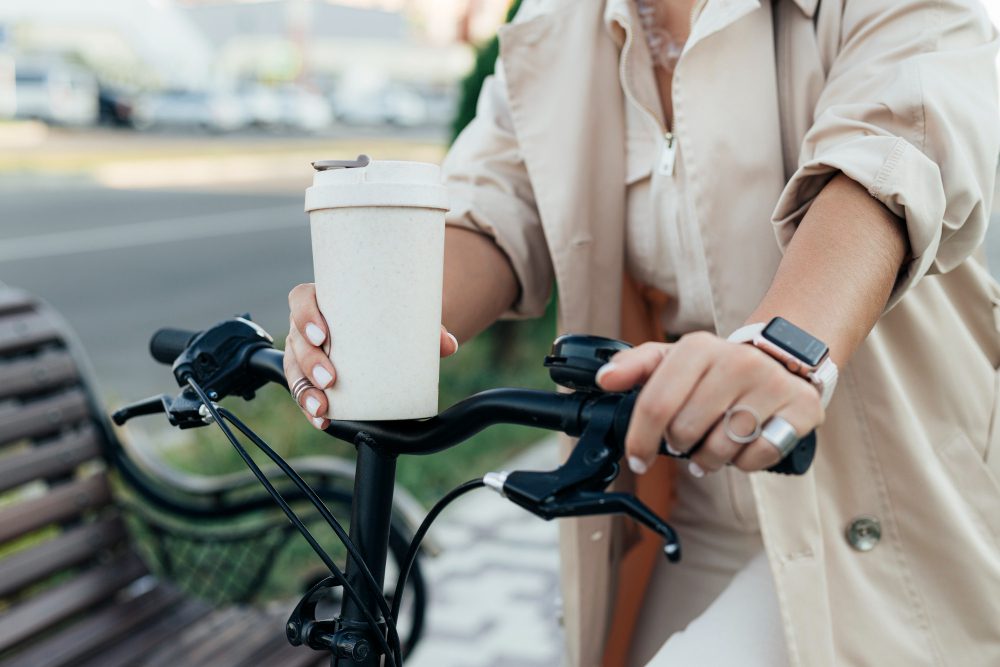
Amid the evolving European sustainability reporting rules, companies now have the opportunity to leverage their preparatory work and shift more focus and resources to actionable strategies and implementation
Sustainable packaging is one of the most tangible—and visible—levers to make a difference. But it’s not just about following trends. The opportunity lies in aligning packaging choices with real-world sustainability targets, operational feasibility, and customer expectations.
📈 Sustainable Packaging Trends in 2025
Here’s what’s shaping sustainable packaging in 2025—and how companies can move from inspiration to implementation.
✅ Minimalist and Lightweight Designs
Companies are increasingly adopting minimalist and lightweight packaging to reduce material usage, lower shipping costs, and decrease carbon emissions. This approach not only aligns with environmental goals but also resonates with eco-conscious consumers seeking sustainable products.(1)
✅ Rise of Recycled and Upcycled Materials
The use of recycled and upcycled materials in packaging is gaining traction. The global recycled packaging market is projected to grow from $51.28 billion in 2025 to $77.16 billion by 2032, reflecting a compound annual growth rate (CAGR) of 5.5%.(2) This shift supports waste reduction and promotes resource efficiency, moving beyond traditional recycling towards true circularity.
✅ Smarter Biodegradable and Compostable Options
Innovations in biodegradable and compostable packaging, such as plant-based plastics, mushroom packaging, and seaweed-derived films, are on the rise. The biodegradable paper and plastic packaging market is expected to reach $17 billion in 2025 and grow beyond $40.75 billion by 2034. However, it’s crucial to conduct Life Cycle Assessments (LCAs) to ensure these materials offer genuine environmental benefits over traditional options.
✅ Reusable and Refillable Systems
Reusable and refillable packaging systems are emerging as game-changers in reducing global plastic waste. The reusable packaging market is projected to grow from $133.72 billion in 2025 to $220.23 billion by 2034, with a CAGR of 5.7%.(3) Implementing these systems requires smart design, collaboration, and economic considerations but offers significant opportunities for innovation and customer loyalty.
✅ Smart and Interactive Packaging
The integration of QR codes and RFID technology in packaging is transforming it into a digital gateway. These features provide consumers with product information, recycling tips, and tracking capabilities, enhancing transparency and engagement. Such smart packaging solutions are also preparing companies for compliance with upcoming regulations like Europe’s Digital Product Passport.
⚠️ A Word of Caution: Sustainable ≠ One-Size-Fits-All
While trends like recycled/upcycled materials, biodegradable and compostable options, and reusable/refillable systems are powerful enablers of circularity, they should not be applied blindly or generalized across all products and sectors.
The right solution depends heavily on the specific application, operational constraints, productivity requirements, and end-to-end life cycle impact, including consumer use and disposal conditions. For example, a compostable film may perform well for fresh produce but be entirely unsuitable for high-barrier industrial applications. Reusable packaging may reduce waste and have truly positive environmental impact only if a well-thought-out reverse logistics model is implemented to ensure the emissions saved on packaging production are not outweighed by transportation related emissions.
To prevent greenwashing, it’s critical to base decisions on robust data—including Life Cycle Assessments (LCAs) and packaging sustainability analytics. With the right data in hand and a holistic approach, companies are far more likely to choose packaging strategies that are not only credible but truly sustainable.
🎯 Visible Contribution to Corporate Sustainability Goals
Adopting sustainable packaging practices supports multiple corporate sustainability targets:
🍃 Scope 3 Carbon Emission Reduction: Material choice, packaging configuration, and weight optimization are key levers. Because most packaging impacts occur upstream—in raw materials, conversion, and packing operations—the decisions made before products leave manufacturing sites are the most impactful.
🍃 Waste Minimization & Zero Waste Goal Contribution: Refusing and reducing packaging are primary drivers. Reusable and refillable packaging systems further cut single-use waste, helping meet corporate waste reduction goals.
🍃 Resource Efficiency: Using recycled and upcycled materials conserves resources and advances circular economy strategies.
🍃 Future Proof for Regulatory Compliance: Managing packaging specifications, gathering robust data, and ensuring alignment across the supply chain help companies meet evolving environmental regulations and standards.
🍃 Responsible Brand Positioning Demonstrating a commitment to sustainability is increasingly important for brands. Data shows that climate change and environmental concerns are top priorities, especially for young people in Europe. A pan-European survey found that more than three-quarters of Europeans aged 20 to 29 consider sustainability an important factor in their choice of employer.(4)
🔄 Pathways to Sustainable and Circular Packaging
To effectively integrate sustainable packaging into business operations, companies should:
⚖️ Base Decisions on Data: Make informed choices by analyzing waste data, conducting Life Cycle Assessments (LCAs), and simulating improvement scenarios—both for individual packaging types and full packaging portfolios.
💰 Invest in Material and Process Innovation: Explore alternative materials and technologies that support recyclability, single-material solutions, sustainable adhesives, lightweighting, and the use of compostable or biodegradable options.
💫 Develop Reuse or Refill Programs: Even if initially challenging from economic or operational perspectives, work with partners to explore, iterate, pilot, and scale reuse solutions. These programs unlock significant innovation and customer engagement opportunities.
💻 Leverage Technology: Embrace digital transformation by integrating product tracking, customer communication, and compliance reporting capabilities across your packaging and supply chains.
📖 Educate Consumers: Use packaging as a storytelling tool to engage consumers about sustainability initiatives and guide them on proper end-of-life handling.
🫱🏼🫲🏽 Collaborate Across the Supply Chain: Partner closely with suppliers, manufacturers, and retailers to align efforts and ensure a cohesive, effective, and scalable sustainable packaging strategy.
💡 Has there ever been a better moment to explore how sustainable packaging can support a steady solid transition toward greater business responsibility and resilience? 👑
💫 At Circl’it, we help businesses find tailored reusable packaging solutions and put them into practice, providing hands-on support for piloting, implementation, communication and team onboarding.
Sources:
(1) Fortune Business Insights: https://www.linkedin.com/posts/chemicals-%26-materials-market-research-fortune-business-insights%E2%84%A2_recycledpackaging-activity-7298562138078375936-JD7T/
(3) TowardsPackaging: https://www.towardspackaging.com/insights/reusable-packaging-market?utm_source=chatgpt.com
(4) European Environmental Bureau, https://eeb.org/library/pan-european-survey-climate-to-priority-for-youth/
(5) World Economic Forum: https://www.weforum.org/stories/2023/06/young-jobhunters-look-for-climate-credentials/
Image: freepik.com


